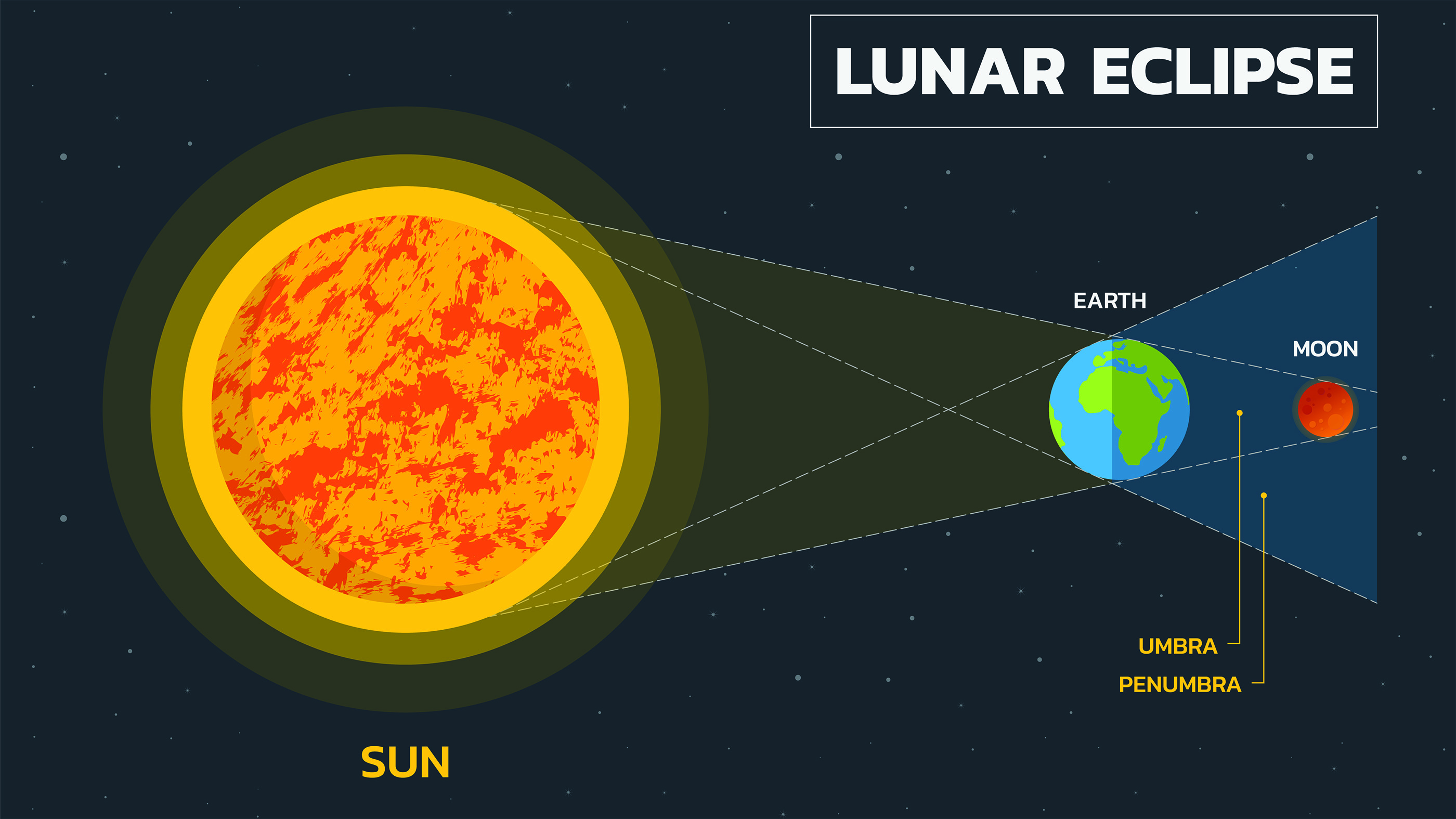Why does the moon turn red during a total lunar eclipse?
Here's why the moon turns a scarlet hue.

When a lunar eclipse occurs and our lone satellite inches into Earth's shadow, the moon's face becomes painted red.
Though this red hue is most striking during a total lunar eclipse, the moon gets cast in a scarlet light even during partial lunar eclipses. So why does our moon turn red and not black when bathed in Earth's shadow?
For instance, the only lunar eclipse visible in North America this year happens on May 15 or 16, depending on your location. For some viewers, they will see a total lunar eclipse, while others will watch as the moon moves into just the edge of Earth's shadow for a penumbral lunar eclipse. When the moon starts to pass into the central portion of Earth's shadow, called the umbra, that's when the fiery glow stands out.
"When the moon is within the umbra, it will turn a reddish hue. Lunar eclipses are sometimes called 'Blood Moons' because of this phenomenon," NASA said.
As for why the moon looks red, it has to do with the way that light scatters. A phenomenon called Rayleigh scattering causes some wavelengths of light to scatter more than others. Specifically, wavelengths of light scatter the most off teensy particles that are about one-tenth the wavelength of the light or smaller.
During a total lunar eclipse, the sun, Earth and moon are perfectly lined up so that our Blue Planet blocks the sun's rays from hitting the moon. But even though Earth is blocking the sun, sunlight is still able to bend around the perimeter of our planet to shine onto the moon. As that light travels toward the moon, it first passes through Earth's atmosphere; and during that trek, particles in the atmosphere preferentially scatter the shorter-wavelength blue light. In that way, the longer-wavelength orange and red light bathe the moon's surface.
Perhaps counterintuitively, this phenomenon also explains why the sky is blue. During the day, the sun's light waves — which are made up of a swath of colors corresponding to their individual wavelengths — get filtered through our atmosphere, where the tiny nitrogen and oxygen gas molecules let the longer wavelengths such as reds, oranges and yellows, pass through straight to the ground (missing our line of sight). But the shorter wavelengths — such as violets and blues — get absorbed and then scattered every which way, giving them more chances to hit our eyes.
Get the world’s most fascinating discoveries delivered straight to your inbox.
The moon will change various shades during different stages of a total lunar eclipse, morphing from an initial grayish to orange and amber. Atmospheric conditions can also affect the brightness of the colors. For instance, extra particles in the atmosphere, such as ash from a large wildfire or a recent volcanic eruption, may cause the moon to appear a darker shade of red, according to NASA.
The moon doesn't always hide completely behind Earth's shadow. During partial lunar eclipses, the sun, Earth and moon are slightly off in their alignment, and so our planet's shadow engulfs just part of the moon.
A novice skywatcher might not even notice the third type of lunar eclipse, the penumbral kind, in which the moon sits in Earth's penumbra, or its faint outer shadow.
The next two total lunar eclipses will occur on May 16, 2022 (visible in the Americas, Europe and Africa), followed by one on Nov. 8, 2022 (visible in Asia, Australia, the Pacific and the Americas), according to NASA.
Original article on Live Science.
Jeanna Bryner is managing editor of Scientific American. Previously she was editor in chief of Live Science and, prior to that, an editor at Scholastic's Science World magazine. Bryner has an English degree from Salisbury University, a master's degree in biogeochemistry and environmental sciences from the University of Maryland and a graduate science journalism degree from New York University. She has worked as a biologist in Florida, where she monitored wetlands and did field surveys for endangered species, including the gorgeous Florida Scrub Jay. She also received an ocean sciences journalism fellowship from the Woods Hole Oceanographic Institution. She is a firm believer that science is for everyone and that just about everything can be viewed through the lens of science.
 Live Science Plus
Live Science Plus







